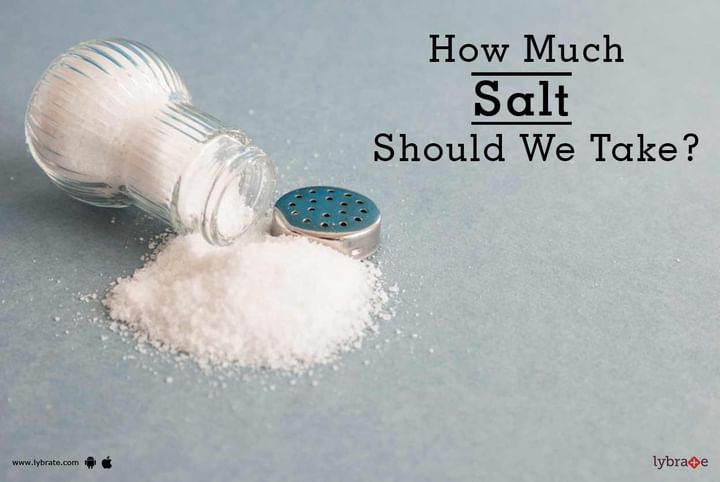How Much Salt Should We Take?
What is salt and sodium?
Salt is made of sodium (40% by weight) and chloride (60% by weight). Sodium is a crucial electrolyte in the body. Sodium is an essential nutrient necessary for maintenance of plasma volume and blood pressure, acid-base balance, transmission of nerve impulses and normal cell function.
Different types of salt?
- Table salt or common salt
- Sea salt
- Himalayan rock salt (sendha namak and black salt)
The primary advantages of various types of salts other than common salt is having trace minerals (in very small amounts) and lack of processing and additives.
How salt intake normally?
WHO recommends that adults consume less than 5 g (just under a teaspoon) of salt per day. This goes around 2300mg of sodium per day. But, most Indian people consume too much salt - on average 9-12 grams per day.
What are health hazards of high salt intake?
How high intake of sodium cause kidney disease?
High salt intake is associated with kidney disease by two mechanisms:
Causing hypertension, vascular injury and proteinuria.
FOOD containing high salts?
Fast foods, preserved and packaged foods like:
- Prickles
- Anchovies
- Soups
- Bread products
- Prawns
- Salted and dry-roasted nuts
- Salt fish
- Smoked meat and fish
- Soy sauce
- Stock cubes
Many snack foods - chips, crackers, and pretzels - contain several hundred milligrams of sodium per serving.
Conditions where low salt is beneficial?
Hypertension, Heart Failure, Kidney disease, Nephrotic syndrome, Kidney stones and Patient on diuretics or ACEi or ARB.
How to reduce sodium (salt) intake?
- Not adding salt during the preparation of food
- Not having a salt shaker on the table
- Limiting the consumption of salty snacks
- Choosing products with lower sodium content
- Remove salt from recipes whenever possible
- Use salt substitutes wisely
- Eat more fresh fruits and vegetables and low-fat dairy
- Use onions, garlic, herbs, spices, citrus juices and vinegars in place of some or all of the salt to add flavour
- Drain and rinse canned beans (like chickpeas, kidney beans, etc.) and vegetables
- Combine lower-sodium versions of food with regular versions. This will not differ much in taste. This works especially well for broths, soups and tomato-based pasta sauces.
- Cook pasta, rice and hot cereal without salt
- Cook by grilling, braising, roasting, searing and sautéing to bring out natural flavors. This will reduce the need to add salt
- Incorporate foods with potassium like sweet potatoes, potatoes, greens, tomatoes.



+1.svg)
